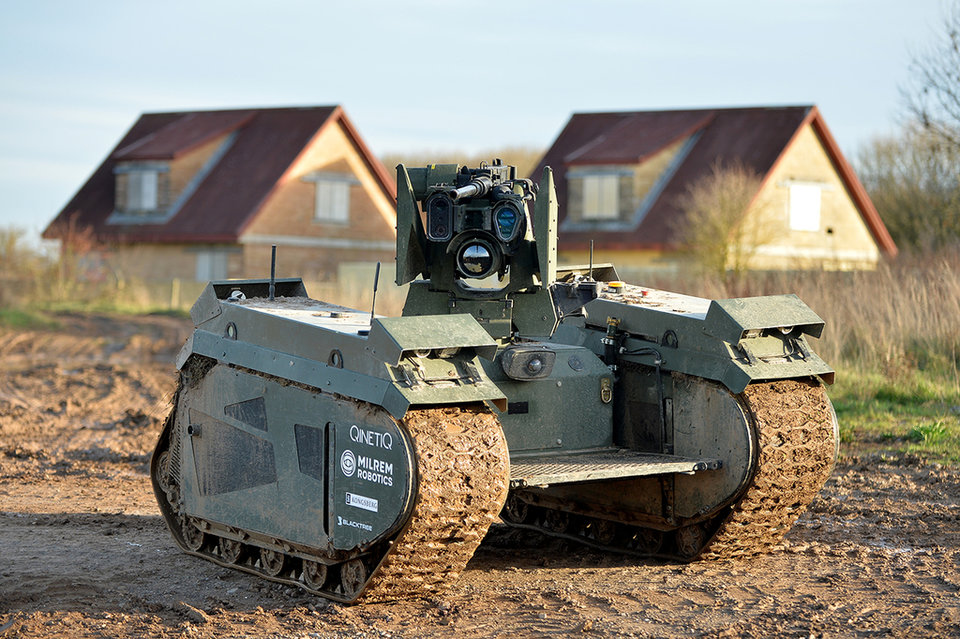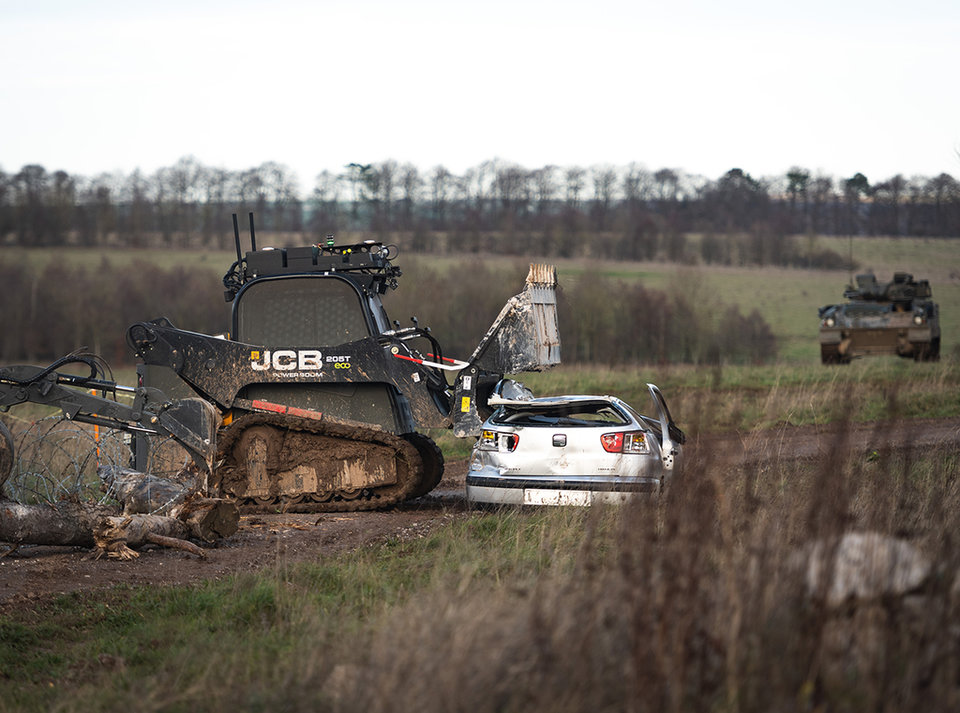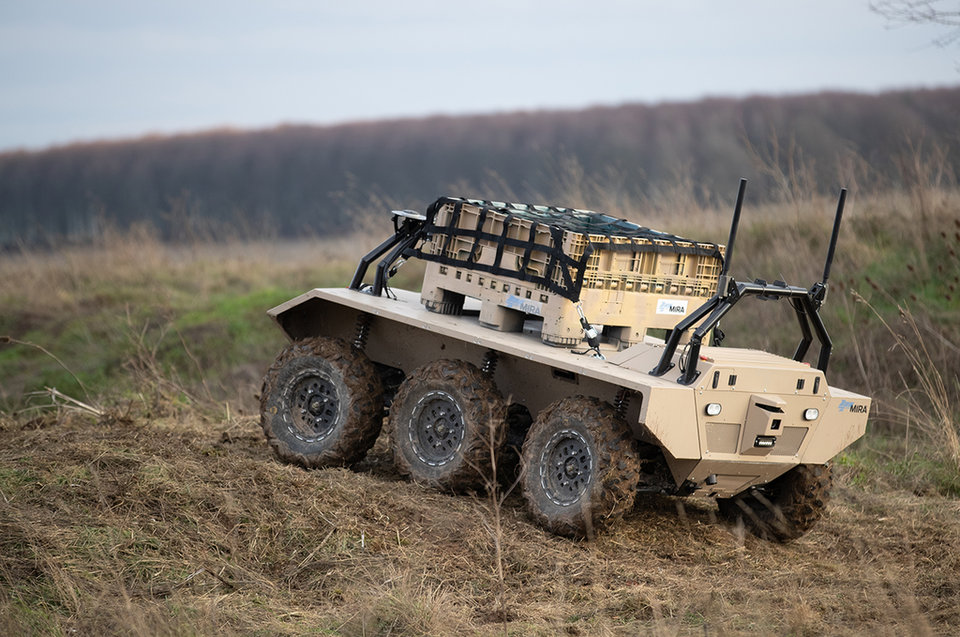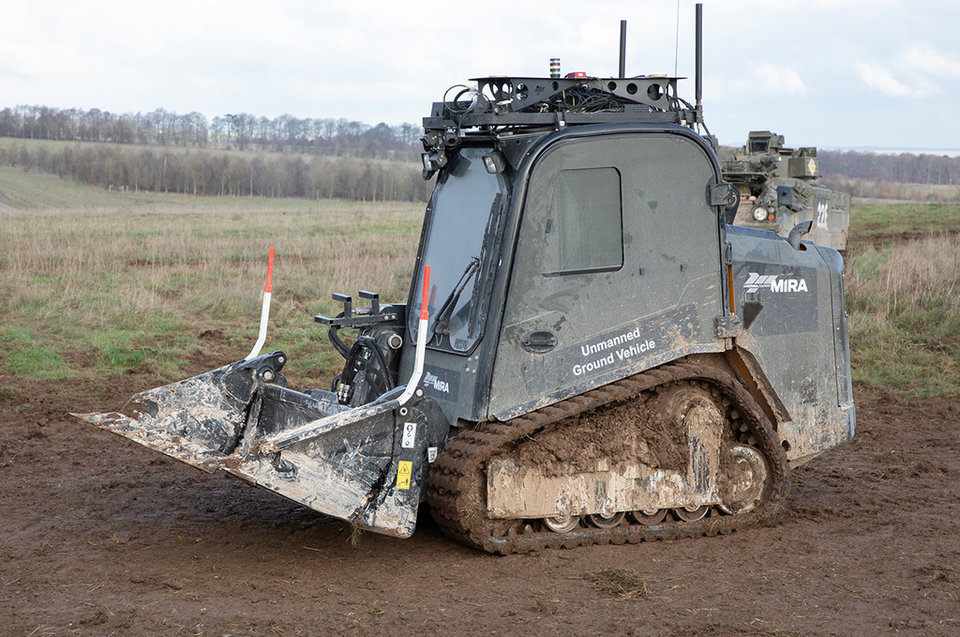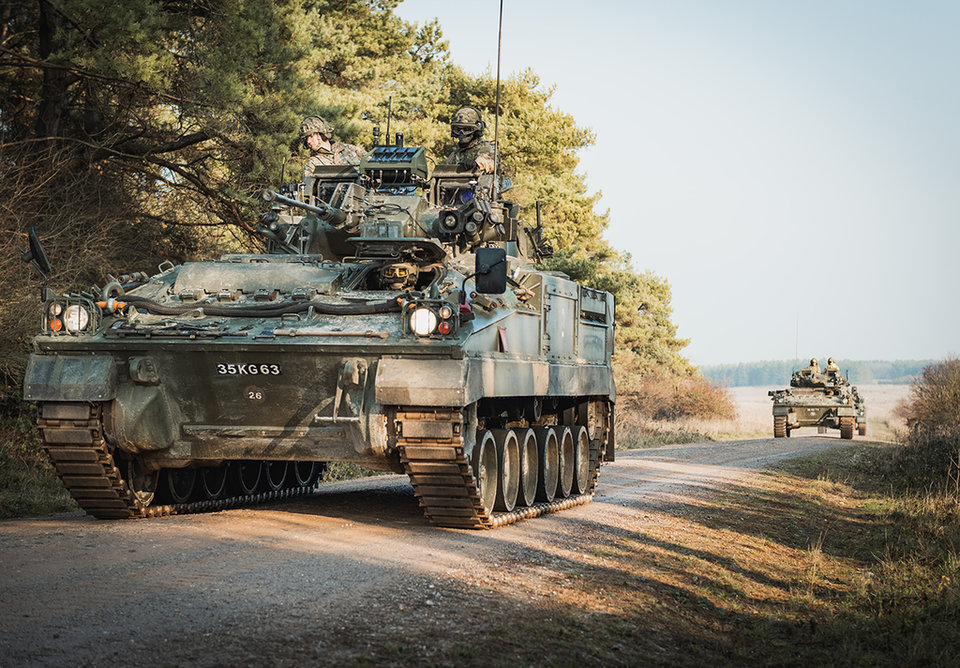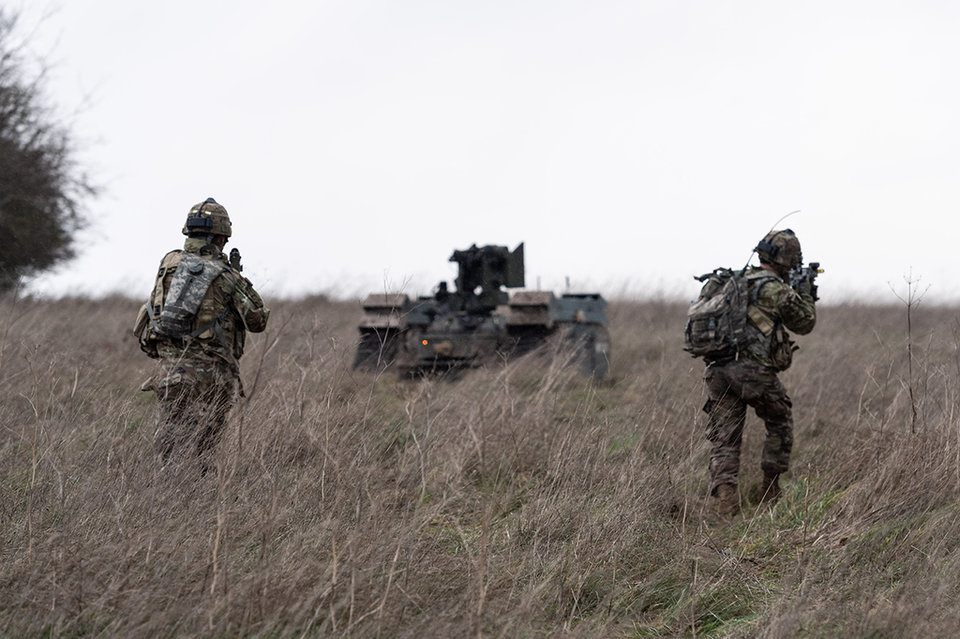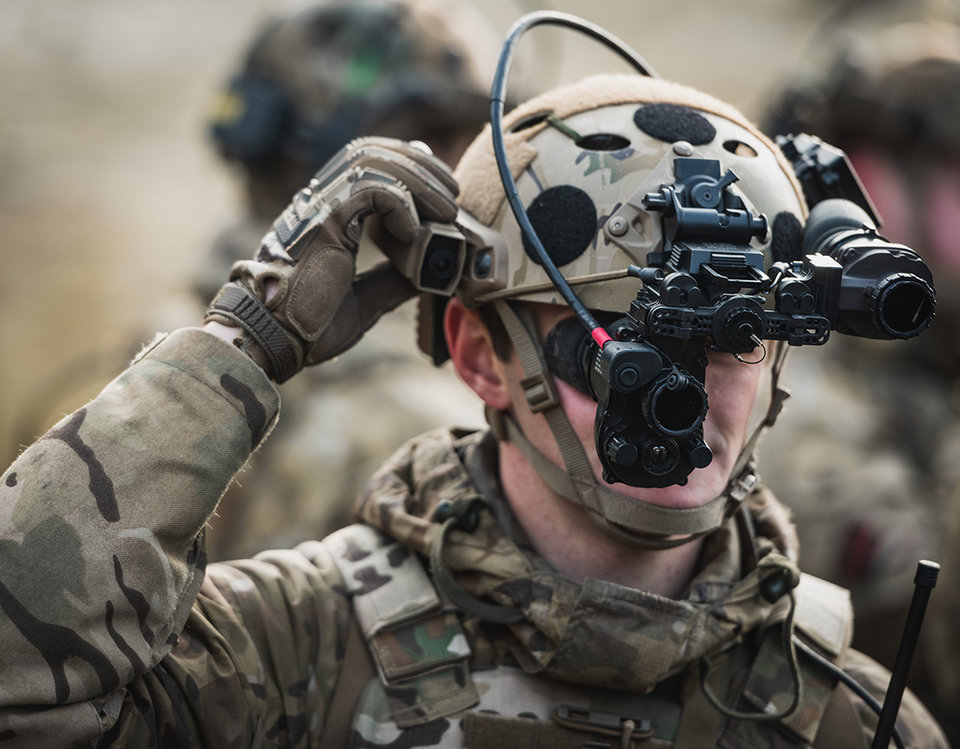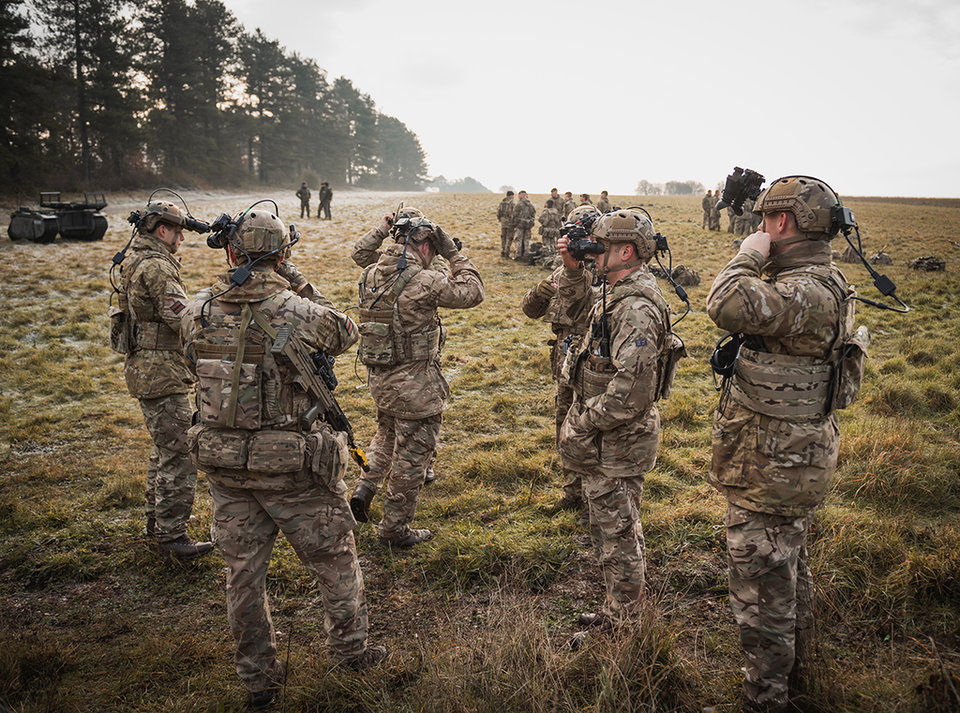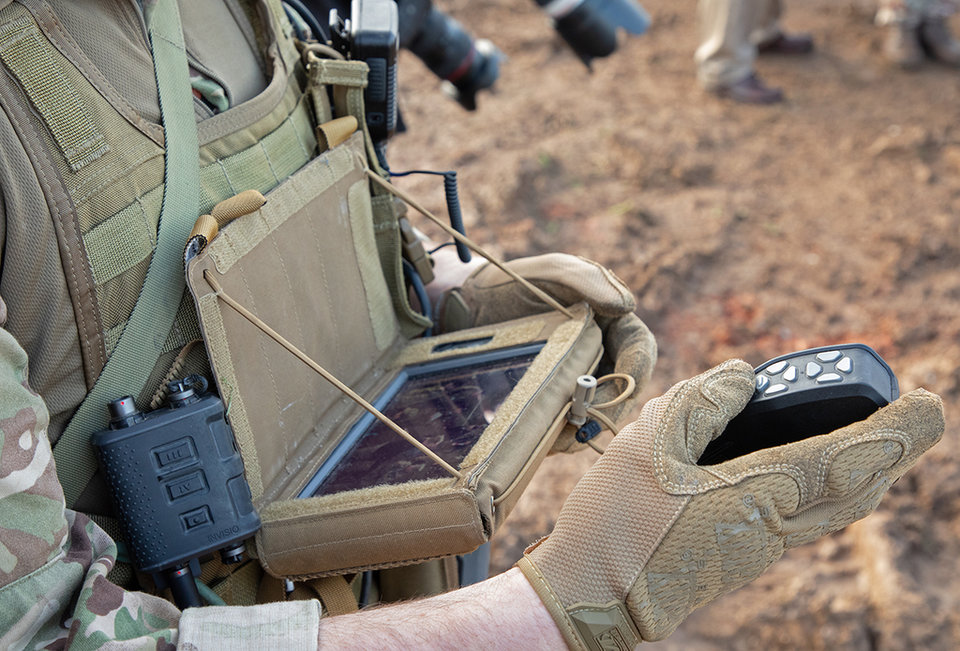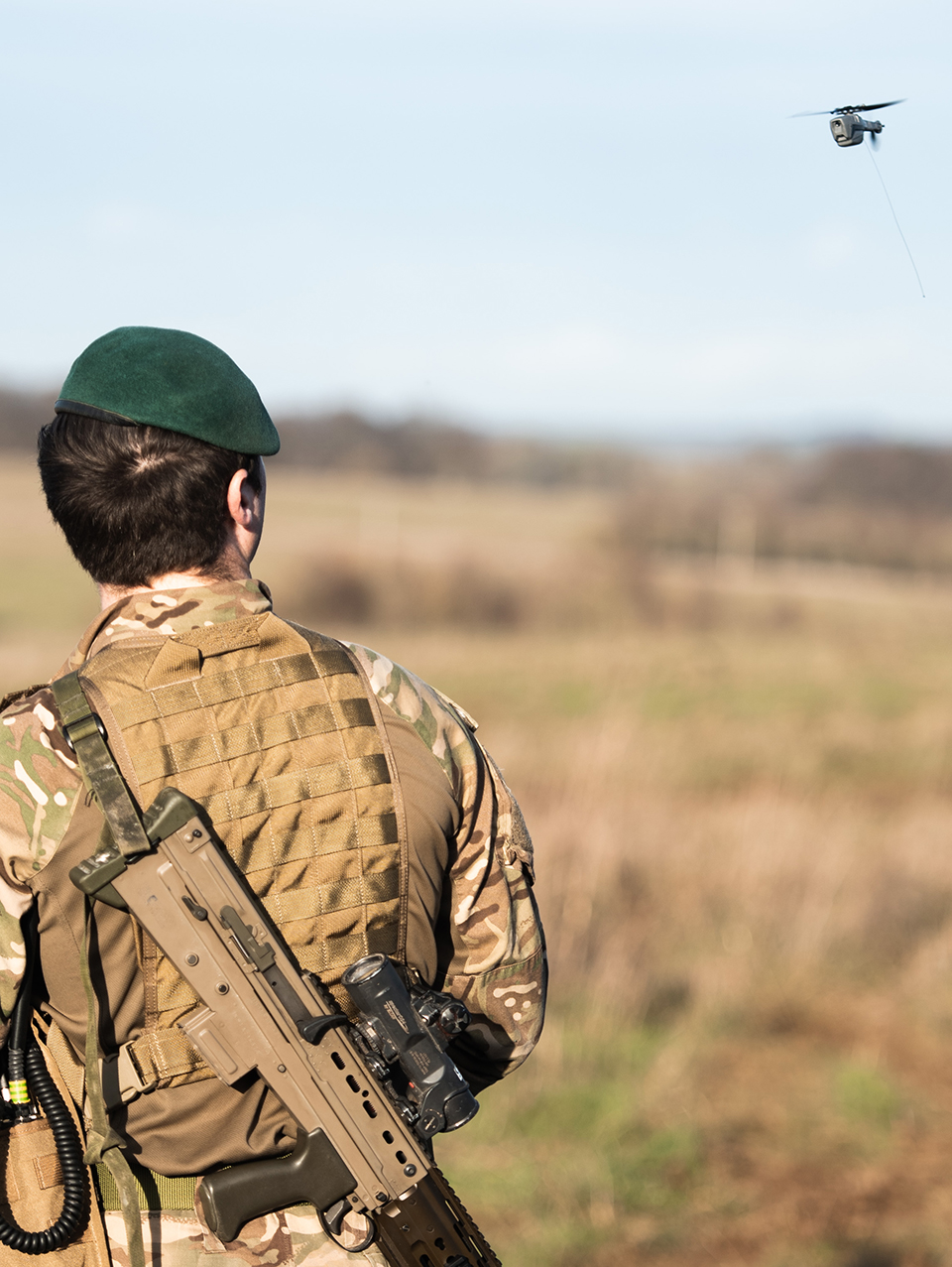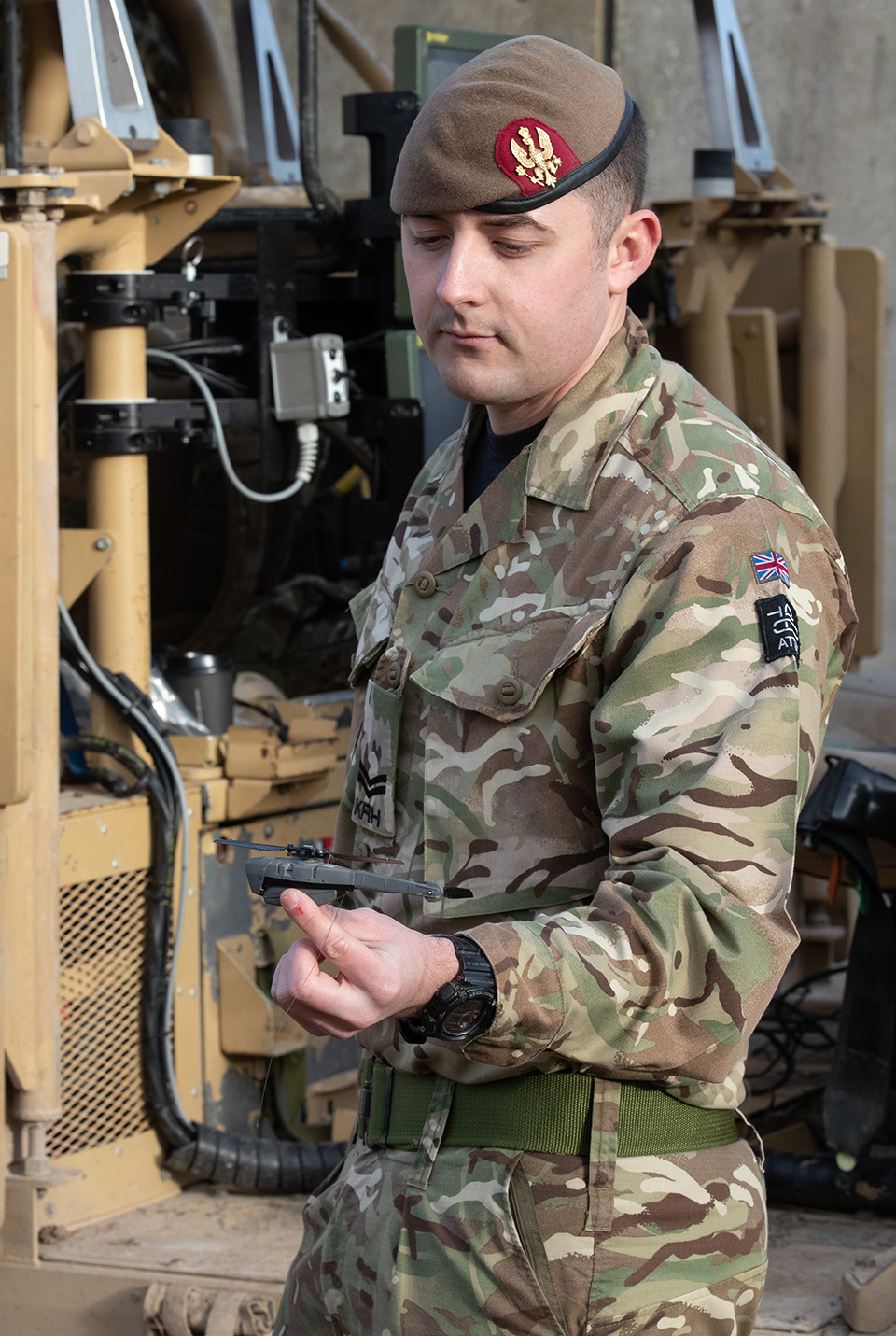land
Exercise Autonomous Warrior 2018 and the future of battlefield robots
During the four-week Autonomous Warrior 2018 exercise British troops and industry partners developed and tested more than 50 prototype technologies including enhanced surveillance drones and unmanned vehicles.Talal Husseini finds out how the technologies could be used to serve and protect troops on the ground.
All images © Crown Copyright / MOD
Throughout November last year, Exercise Autonomous Warrior Land 2018 was in full swing. Defence technology experts congregated with British troops at the Salisbury Plain Training Area to develop more than 50 prototype unmanned aerial and ground vehicles, built by leading defence organisations to reduce danger in the field.
The exercise concluded with simulated battlegroup experiments, in which the best ideas were put to the test in tough operational environments. Challenges included incorporating unmanned aerial vehicles to improve localised situational awareness on the front line, and developing an ‘autonomous warrior’ vehicle that could apply multiple technologies simultaneously.
The technologies trialled at Autonomous Warrior 2018 offer an exciting glimpse into the potential of automation and robotics in reducing casualties on the battlefield.
An opportunity for real development
For all intents and purposes, Exercise Autonomous Warrior was so much more than a defence technology showcase.
Leading defence companies had the chance to develop a full range of technologies across different application areas, from situational awareness and decision support, movement and manoeuvre to firepower, force protection and sustainability.
Ministry of Defence (MOD) assistant head of capability strategy and force development Colonel Peter J Rowell MBE says: “One of the principal aims of Autonomous Warrior, if not its principal aim, was to provide an opportunity for industry to rapidly develop their robotic and autonomous systems by being in a representative environment with real operators for a sufficient period of time that meant that they could go through a number of development cycles.
“The team were enthused by the levels of participation in Autonomous Warrior, especially the innovation offered of UK industries in the exercise.”
“The industry partners that came along and participated in the four-week activity were able to get through several generations of their development and really get a good understanding of our use-case requirements.
“They were able to then look at the challenges that we have been tackling in certain ways thus, and suggesting novel ways of utilising RAS [robotics and autonomous systems] for us to tackle tactical challenges that we have been dealing with in a certain way. So it's a symbiotic relationship really. The team were enthused by the levels of participation in Autonomous Warrior, especially the innovation offered of UK industries in the exercise, as well as UK Armed Forces, US troops, and observers from more than 17 countries.”
Enhancing situational awareness with drones
One of the key objectives behind Exercise Autonomous Warrior is to provide novel solutions to current defence challenges. Rowell mentions two examples that were observed over the last 18 months or so, and how participants attempted to solve these issues at Autonomous Warrior.
The first challenge to overcome was developing localised situational awareness of forward tactical troops.
“Whether that's to just see over the hill or over the hedge line or just on the other side of the forestry block,” says Rowell. “And so we thought that a surveillance-type asset, whether that be something that flies or is on the ground, would give us that situational awareness that we need and would allow the folk on the battlefield to better understand the situation.”
The troops quickly discovered that, in the presence of an unmanned aerial vehicle, they became disoriented and the drone controller began using the UAV to flush the enemy out of hiding or to herd forces into a particular location.
Rowell explains: “What we found was that when we did have these types of systems, particularly ones that were slightly noisy – you can picture quadcopter-type vehicles or fixed-wing unmanned air systems – is that the very presence of those flying over an adversary's location, or when we gave those to the enemy and circulating over our forces, it fundamentally changed how people were acting and manoeuvring on the battlefield.”
Constructing the eponymous ‘autonomous warrior’
Another concept was to develop an autonomous land vehicle that was not limited to a specific task, but could perform a range of tasks incorporating multiple technologies.
“We had a nascent idea at the beginning of it, that because the exercise was called Autonomous Warrior Land, wouldn't it be a great idea if we could automate a warrior fighting vehicle?” says Rowell.
“A very small company thought that they could have a go at doing that and at the very beginning they put some of their technology on to one of our warrior fighting vehicles and it could kind of move around a car park. By the end of the exercise, it was roaring around Salisbury Plain at over 50km/h.”
“If you are about to plunge into a very heavily defended area, for example an urban area, it is probably a good idea to have your lead vehicle with no people in it.”
Rowell notes that a person sat at the helm of the land vehicle for safety reasons, but the vehicle was controlled remotely. Although it is still in the early stages of development, Rowell says an unmanned vehicle like this one would be an advantage on the battlefield, not just for unleashing attacks, but also to draw fire away from soldiers and more valuable assets.
“One of the use cases that you can see from that is that if you are about to plunge into a very heavily defended area, for example an urban area, it is probably a good idea to have your lead vehicle with no people in it because it is going to be a bullet and roadside bomb magnet and that's probably quite a good idea,” he says.
“You're putting the metal before the flesh, if you like.”
Preparing for the conflicts of tomorrow
Central to Autonomous Warrior is the MOD’s effort to develop future technologies that could be incorporated into real operations of today. While some novel concepts may need years to develop, Rowell’s team hopes to integrate the more mature technologies soon.
Rowell says: “The idea is for us to explore what we have learned in the partnerships that we have developed in a number of areas, and one of those is to draw some of the most mature of these into the hands of our soldiers on operations, or being ready for operations, or in training, as quickly as possible.
“The Director Capability, General Chris Tickell, stood up at the end of each of the visitors' days and said we are going to take forward this work in as short and aggressive a timeframe as possible. That is just one strand of our exploitation.”
“We will soon be launching an army industrial engagement framework which will outline how industry and the army can work more closely together.”
The industry partnerships developed during Autonomous Warrior will continue to grow long after the exercise wrapped up in November.
“It is part of our efforts within the army to continue to improve and deepen our interaction with industry and we will soon be launching an army industrial engagement framework, which will outline how industry and the army can work more closely together, and Exercise Autonomous Warrior is a brilliant example of that type of interaction that we are seeking,” says Rowell.
The MOD is holding an exploitation conference on 5 March 2019 in London, and one of the main discussion points will be how to reduce the risk of harm to soldiers and give warfighters the greatest possible advantage in battle.
Rowell concludes: “And so if I were to say the one unifying thing that drew together everything that we experienced in Exercise Autonomous Warrior and everything we hope to do within in it, it’s that it’s all about people, whether those are the soldiers that will be taking this capability and using it in operations, or the engineers who are vital to developing our next generation of battleground equipment.”
